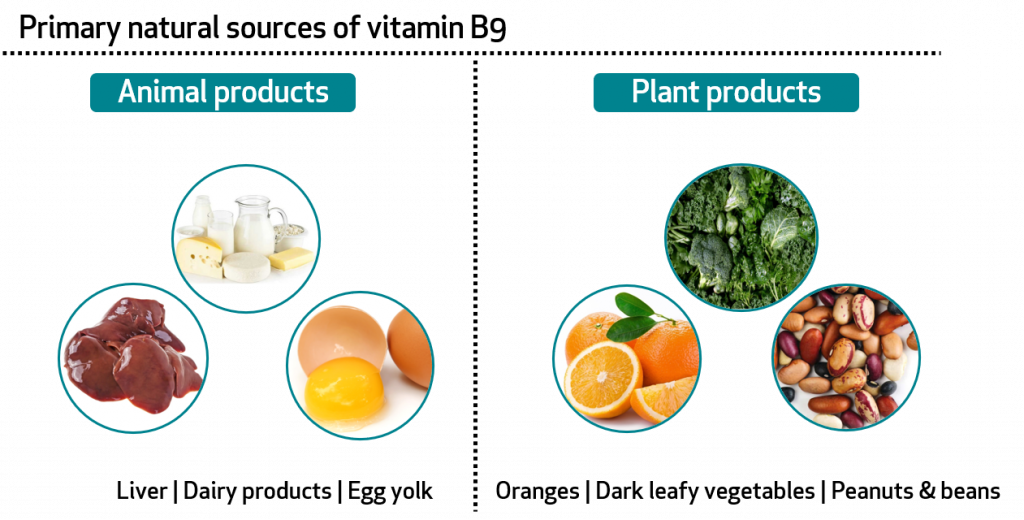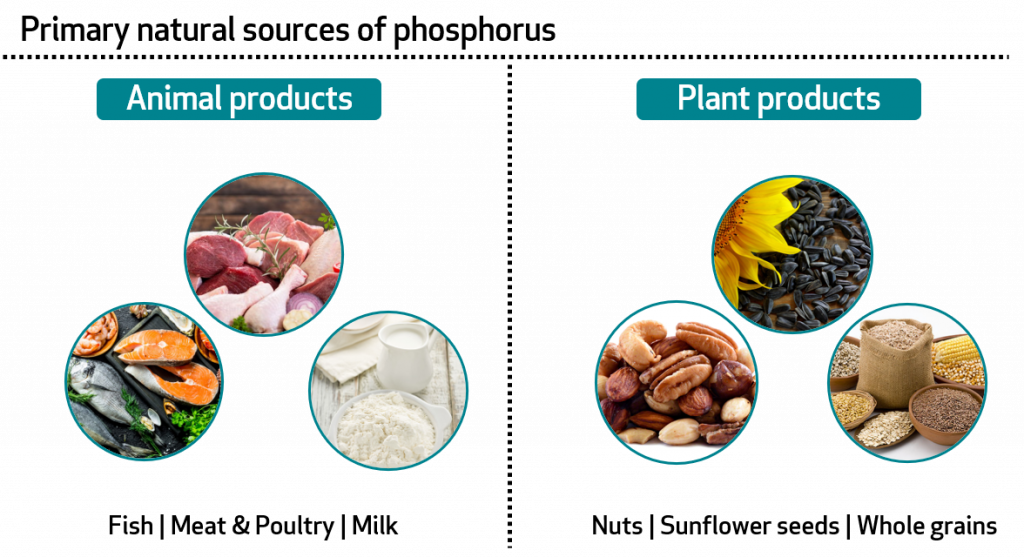
NOVEMBER 2020
Inspired by the Sight and Life publication “Vitamins and Minerals: A Brief Guide”, we continue with our Learn About Your Vitamins and Minerals series by discussing vitamin B9 and phosphorus.
Vitamin B9
Vitamin B9, also known as folate, is a water-soluble B vitamin found naturally in many foods. The most stable form of vitamin B9 is folic acid, which is the synthetic analog of folate and is usually found in supplements. Vitamin B9 plays an important role in protein metabolism and nucleic acid (DNA & RNA) synthesis. It is also essential to cell growth, especially in the production of healthy red blood cells.
Vitamin B9 is especially important during periods of rapid growth, such as during pregnancy and fetal development. Women of reproductive age and especially those who are planning to become pregnant should ensure they are consuming enough folate as it has a protective effect against birth defects resulting from poor development of the neural tube, spine, and brain very early in a pregnancy, often before a woman even knows she is pregnant. Taking a folic acid supplement after the pregnancy is confirmed as usually too late to protect against these birth defects.
Sources of vitamin B9. Vitamin B9 can be found naturally in many foods. The primary animal sources of vitamin B9 includes liver, dairy products, egg yolk, and seafood. Natural primary plant sources are dark green leafy vegetables (e.g. spinach, romaine lettuce, asparagus, broccoli), beans, peanuts, sunflower seeds, fresh fruits, fruit juices, whole grains, wheat germ, and yeast. Additionally, in many countries, wheat and maize flours, rice, and processed foods utilizing these ingredients (e.g. breakfast cereals, biscuits, and pasta) are fortified or enriched with vitamin B9.
Vitamin B9 has variable bioavailability depending on the form and conditions of ingestion. In the form of folic acid from supplements, vitamin B9 is also 100% bioavailable when taken without food. When taken with food, folic acid is more bioavailable in the gut than its naturally occurring folate (85% vs 50% absorption respectively).
Vitamin B9 Deficiency and Prevention. Deficiency of vitamin B9 may be caused by diets that do not contain enough fruits and vegetables, especially dark green leafy vegetables and legumes. Vitamin B9 deficiency is usually characterized by digestive problems, tiredness, loss of appetite, hair loss, irregular heartbeat, shortness of breath, difficulty concentrating, and megaloblastic anemia (production of fewer red blood cells which are larger in size than normal).
Certain conditions like alcoholism, digestive disorders, intestinal surgeries, genetics, and pregnancy may increase an individual’s risk of vitamin B9 deficiency. Consuming additional Vitamin B9 (at least 400 micrograms per day) is essential during pregnancy, as it’s deficiency can result in birth defects of the brain and spine, including spina bifida, anencephaly, and encephalocele. Of these, the latter two often results in miscarriage and infant death shortly after birth. Spina bifida is a survivable birth defect, but often is accompanied by loss of movement, various degrees of paralysis, and other health issues and likely will require a lifetime of surgery to manage.
Deficiency of vitamin B9 can also indicate a deficiency of vitamin B12. Vitamin B12 plays an important role in converting vitamin B9 to its active form in the body, tetrahydrofolic acid. Deficiency can be prevented by adequate consumption of foods rich in vitamin B9 or through supplements.

Phosphorus
Phosphorus is the second most abundant mineral in the body, next to calcium. Together with calcium, it helps to build strong bones and teeth in the body. About 85% of the body’s phosphorus can be found in the bones and teeth. Phosphorus is present in nearly every cell of the body and forms a major part of cell buffer systems by producing phosphoric acid and phosphoric salts. Phosphorus also plays a key role in energy metabolism and the storage and usage of adenosine triphosphate (ATP), the energy that cells use to perform their functions. The ATP molecule requires three phosphate groups to perform its function in energy metabolism.
Phosphorus also plays an important part in how lipids are used in the body. Lipids in the cell wall of the body bind to phosphorus to form phospholipids, which give the cells their fluid-structure to allow the transport of compounds in and out of the cells. It is also needed for the body to make protein for the growth, maintenance, repair of cells and tissues, and synthesis of the nucleic acids DNA and RNA. Phosphorus assists in activation of many enzymes and B-vitamins through the attachment of phosphate groups.
Sources of phosphorus. Primary animal sources include poultry, eggs, meat, fish, seafood, and milk. Primary plant sources are sunflower and pumpkin seeds, nuts, whole grains, beans, and legumes. It must be noted that processed foods and beverages (e.g. processed meats, baked products, and cola beverages) often contain inorganic phosphate as an additive or preservative, which may also be a source of phosphorus.
The absorption rate for natural animal and plant food sources of phosphorus is between 40%–70%; however, phosphorus from animal sources has a higher absorption rate than that from plants. It is estimated that only about 50% of phosphorus from plant sources are absorbed in the body. This is because seeds, which are the primary plant sources of phosphorus, usually contain anti-nutritional factors such as phytate, which lowers the absorption of phosphorus. Excessive consumption of phosphorus can lead to calcium deficiency since large amounts of phosphorus interfere with calcium metabolism.
Phosphorus Deficiency and Prevention. Phosphorus is readily available in food, making deficiency of the mineral rare. However dietary phosphorus deficiency can be found in cases of severe malnutrition, alcoholism, and anorexia, as well as in some preterm newborns and individuals with genetic phosphate regulation disorders. Phosphorus deficiency is characterized by muscle weakness, confusion, increased risk of infection, poor appetite, and irritability. Deficiency of phosphorus in children leads to decreased growth, especially poor bone and tooth development.
Consuming adequate amounts of foods rich in phosphorus or taking inorganic supplements can help prevent phosphorus deficiency.
Next in this series, we discuss vitamin B12 and potassium.

